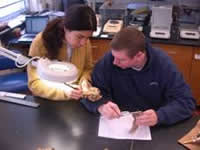The Mechanics of FaST

WHO?
- Any faculty and students who work/attend any officially designated HSI university or college.
- Teams consisted of one faculty member and two students (any combination of upper division undergraduates, Masters, or PhD students).
- Host facilities included labs and research stations at NRI-grantee institutions that have proven records of accomplishment in mentoring researchers from underrepresented groups.
WHAT?
- Placed research teams in selected National Research Initiative (NRI) grantee facilities around the country to conduct research related to key objectives of the U.S. Department of Agriculture.
- Teams were matched to any USDA NRI (National Research Initiative) program of their interest.
WHEN?
- Teams were chosen for a ten week placement for the Summer of 2009 and Summer of 2010.
WHERE?
- Teams chose from any domestic USDA participating research station or lab.
WHY?
- 8.00% - Hispanics continue to lag behind other demographic groups in the United States in obtaining advanced degrees .
- 7.16% - Percentage of Hispanics among all science graduate students.
- 5.17% - Percentage of Hispanics among all Agricultural graduate students.
- 2.17% - Percentage among all Hispanic science graduate students who are in Agricultural sciences.
The nation has an ever-increasing need for well-trained, qualified professionals in natural sciences, technology, and social sciences capable of meeting needs in the crucial areas of food, agriculture, and natural resource management.
Further, as the Hispanic population of the United States grows, it will become increasingly important for members of this group to be represented in producing knowledge and setting policies related to these important areas.